New research shows that the genetic capacity of bacteria to make terpenes is widespread. Using a specialized technique to sift through genomic databases for a variety of bacteria, the researchers found 262 gene sequences that likely code for terpene synthases - enzymes that catalyze the production terpenes.
Dec 23rd, 2014
Read more
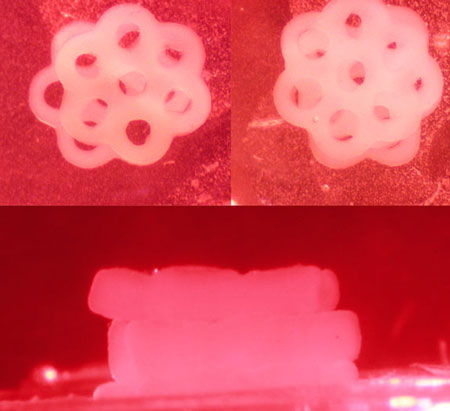 A new instrument could someday build replacement human organs the way electronics are assembled today: with precise picking and placing of parts.
A new instrument could someday build replacement human organs the way electronics are assembled today: with precise picking and placing of parts.
Dec 22nd, 2014
Read more
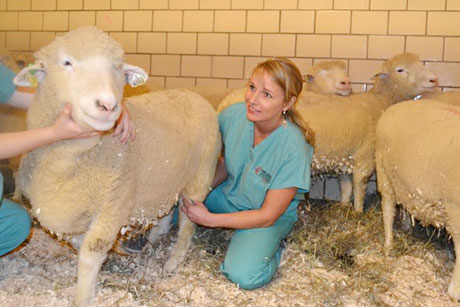 Researchers report on a revolutionary new procedure that uses 3-D printing and the body's stem cells to regenerate knee meniscus, a tissue lining that acts as a natural cushion between the femur and tibia.
Researchers report on a revolutionary new procedure that uses 3-D printing and the body's stem cells to regenerate knee meniscus, a tissue lining that acts as a natural cushion between the femur and tibia.
Dec 19th, 2014
Read more
 Many genetic mutations in visual pigments, spread over millions of years, were required for humans to evolve from a primitive mammal with a dim, shadowy view of the world into a greater ape able to see all the colors in a rainbow. Now, after more than two decades of painstaking research, scientists have finished a detailed and complete picture of the evolution of human color vision.
Many genetic mutations in visual pigments, spread over millions of years, were required for humans to evolve from a primitive mammal with a dim, shadowy view of the world into a greater ape able to see all the colors in a rainbow. Now, after more than two decades of painstaking research, scientists have finished a detailed and complete picture of the evolution of human color vision.
Dec 19th, 2014
Read more
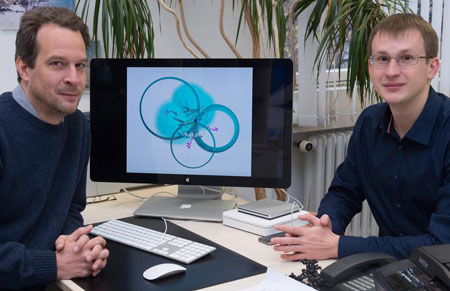 In everyday life, the global positioning system (GPS) can be employed to reliably determine the momentary location of one en route to the desired destination. Scientists have now developed a molecular 'GPS' with which the whereabouts of metal ions in enzymes can be reliably determined. Such ions play important roles in all corners of metabolism and synthesis for biological products.
In everyday life, the global positioning system (GPS) can be employed to reliably determine the momentary location of one en route to the desired destination. Scientists have now developed a molecular 'GPS' with which the whereabouts of metal ions in enzymes can be reliably determined. Such ions play important roles in all corners of metabolism and synthesis for biological products.
Dec 19th, 2014
Read more
Scientists have developed a powerful new system for studying how proteins and other biological molecules form and lose their natural folded structures.
Dec 18th, 2014
Read more
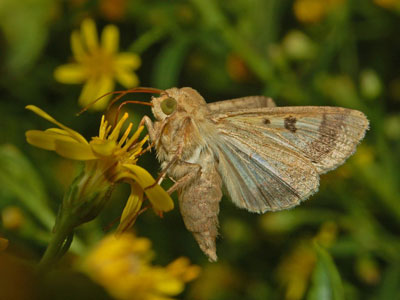 Combining computer modeling and field research on cotton pests, a study suggests that biotechnology and traditional agriculture can be compatible approaches toward sustainable agriculture.
Combining computer modeling and field research on cotton pests, a study suggests that biotechnology and traditional agriculture can be compatible approaches toward sustainable agriculture.
Dec 18th, 2014
Read more
A new catalytic process is able to convert what was once considered biomass waste into lucrative chemical products that can be used in fragrances, flavorings or to create high-octane fuel for racecars and jets.
Dec 17th, 2014
Read more
 Chemists have invented a powerful method for joining complex organic molecules that is extraordinarily robust and can be used to make pharmaceuticals, fabrics, dyes, plastics and other materials previously inaccessible to chemists.
Chemists have invented a powerful method for joining complex organic molecules that is extraordinarily robust and can be used to make pharmaceuticals, fabrics, dyes, plastics and other materials previously inaccessible to chemists.
Dec 17th, 2014
Read more
 Scientists have crafted the first synthetic molecules that have both the targeting and response functions of antibodies.
Scientists have crafted the first synthetic molecules that have both the targeting and response functions of antibodies.
Dec 17th, 2014
Read more
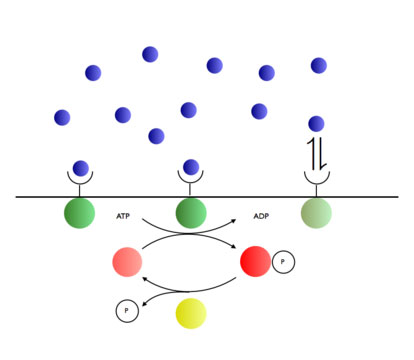 Researchers have discovered what determines the accuracy with which cells can measure chemical concentrations.
Researchers have discovered what determines the accuracy with which cells can measure chemical concentrations.
Dec 17th, 2014
Read more
Researchers are working to improve materials used in hip and knee replacements so that they last longer and allow patients to quickly get back on their feet after surgery.
Dec 15th, 2014
Read more
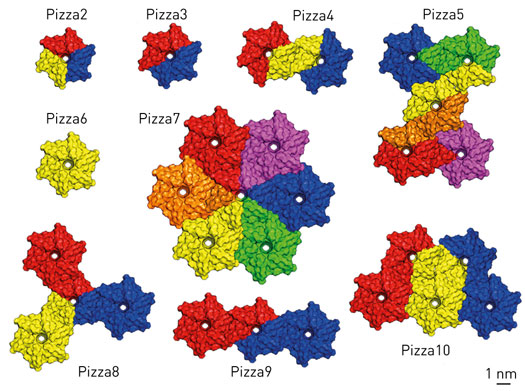 The computationally assisted synthesis of a symmetrical propeller protein that retraces protein evolution could also be used to develop new protein structures for biotechnology applications.
The computationally assisted synthesis of a symmetrical propeller protein that retraces protein evolution could also be used to develop new protein structures for biotechnology applications.
Dec 12th, 2014
Read more
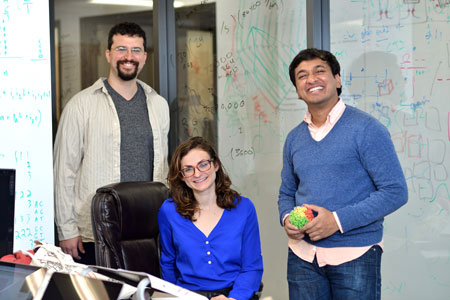 In a triumph for cell biology, researchers have assembled the first high-resolution, 3-D maps of entire folded genomes and found a structural basis for gene regulation - a kind of 'genomic origami' that allows the same genome to produce different types of cells.
In a triumph for cell biology, researchers have assembled the first high-resolution, 3-D maps of entire folded genomes and found a structural basis for gene regulation - a kind of 'genomic origami' that allows the same genome to produce different types of cells.
Dec 11th, 2014
Read more
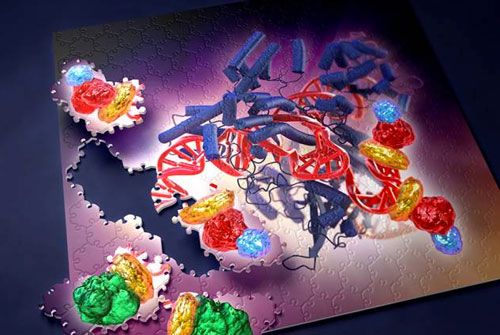 Technique allows rapid, large-scale studies of gene function.
Technique allows rapid, large-scale studies of gene function.
Dec 11th, 2014
Read more
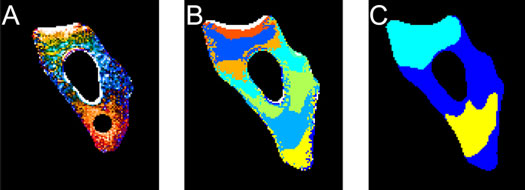 When a large protein unfolds in transit through a cell, it slows down and can get stuck in traffic. Using a specialized microscope , researchers now can watch the way the unfolded protein diffuses. Studying the relationship between protein folding and transport could provide great insight into protein-misfolding diseases such as Alzheimer's and Huntington's.
When a large protein unfolds in transit through a cell, it slows down and can get stuck in traffic. Using a specialized microscope , researchers now can watch the way the unfolded protein diffuses. Studying the relationship between protein folding and transport could provide great insight into protein-misfolding diseases such as Alzheimer's and Huntington's.
Dec 10th, 2014
Read more
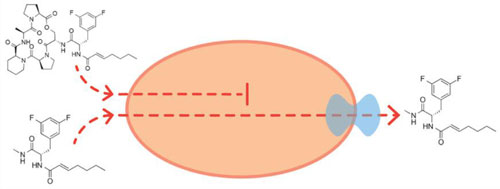 Efflux pumps are surface proteins that prevent antimicrobial drugs from getting a foothold in a bacterial cell by identifying and pumping them out of the cell. New research suggests that small pieces of those drugs could keep the efflux pumps busy and allow the antimicrobial drugs to reach a critical mass inside the cell.
Efflux pumps are surface proteins that prevent antimicrobial drugs from getting a foothold in a bacterial cell by identifying and pumping them out of the cell. New research suggests that small pieces of those drugs could keep the efflux pumps busy and allow the antimicrobial drugs to reach a critical mass inside the cell.
Dec 9th, 2014
Read more
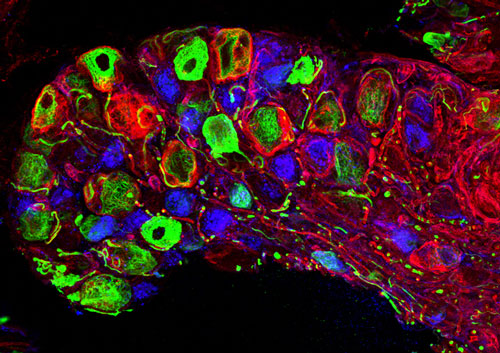 Scientists can now explore nerves in mice in much greater detail than ever before, thanks to an approach developed by scientists at the European Molecular Biology Laboratory (EMBL). The work enables researchers to easily use artificial tags, broadening the range of what they can study and vastly increasing image resolution.
Scientists can now explore nerves in mice in much greater detail than ever before, thanks to an approach developed by scientists at the European Molecular Biology Laboratory (EMBL). The work enables researchers to easily use artificial tags, broadening the range of what they can study and vastly increasing image resolution.
Dec 9th, 2014
Read more

 Subscribe to our Biotechnology News feed
Subscribe to our Biotechnology News feed












